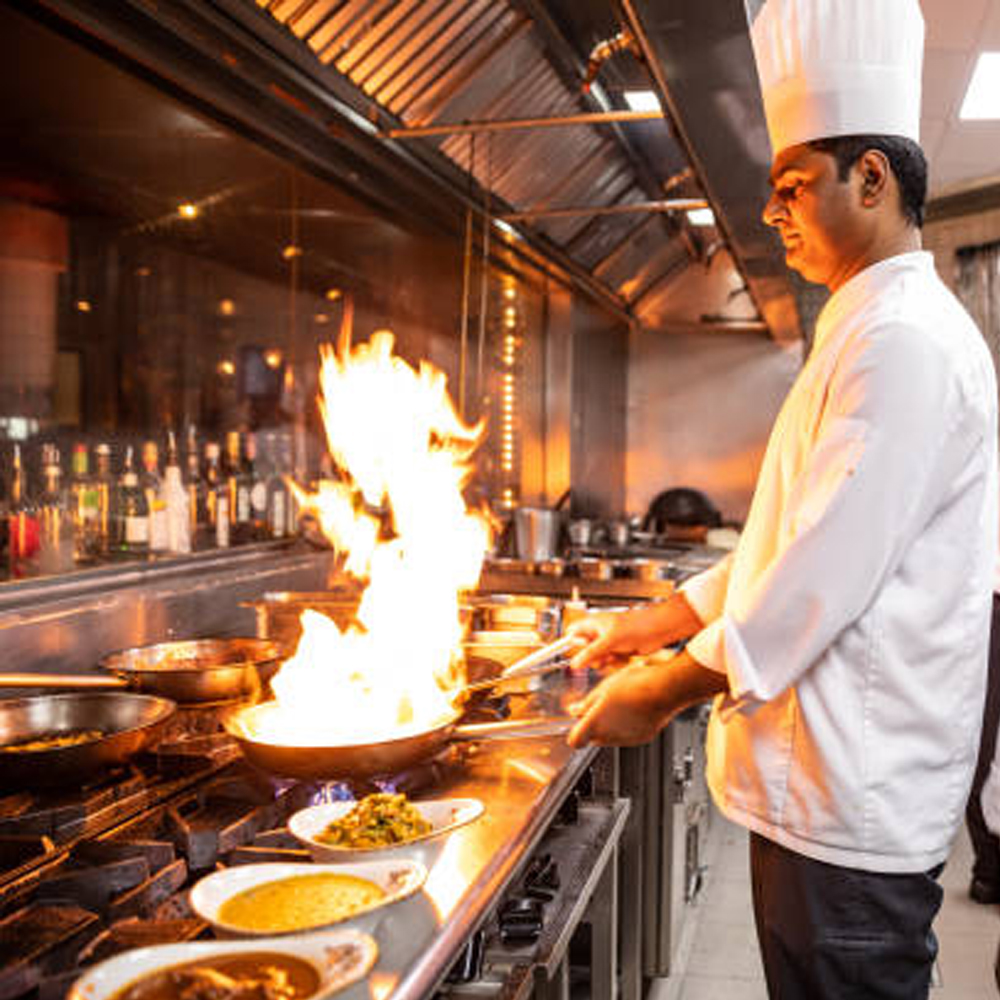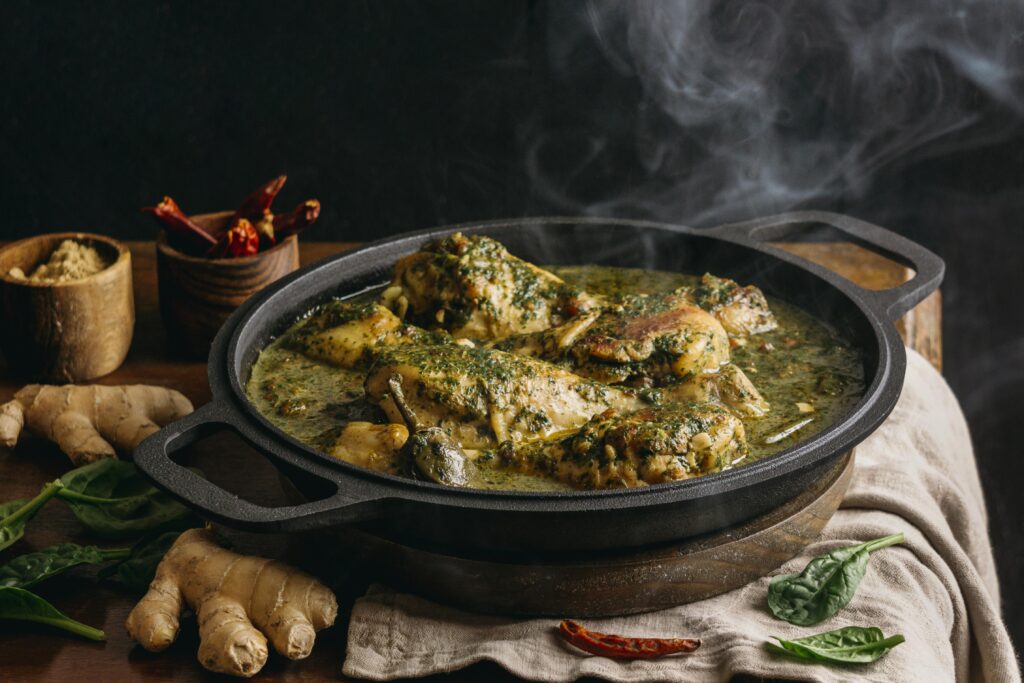Indian cuisine is renowned for its vibrant flavors, rich spices, and diverse dishes. But beyond its taste, there’s a growing interest in the health benefits of traditional Indian cuisine food. With a history that spans thousands of years and a variety of culinary influences, Indian food offers not only a feast for the senses but also a nutritious diet. Let’s explore how healthy Indian cuisine truly is and what makes it stand out in the global culinary landscape.
Nutritional Benefits of Indian Cuisine Food
The following are some nutritional benefits of Indian Cuisine Food:
Rich in Spices and Herbs
Indian cuisine is synonymous with spices and herbs, such as turmeric, cumin, coriander, and ginger. These ingredients not only enhance flavor but also offer numerous health benefits. For instance, turmeric contains curcumin, known for its anti-inflammatory and antioxidant properties. Ginger aids digestion, and cumin is a good source of iron.
Balanced Use of Vegetables and Legumes:
Indian dishes often incorporate a variety of vegetables and legumes, providing a rich source of vitamins, minerals, and fiber. Dishes like dal (lentil soup) and vegetable curries are staples in Indian cuisine, offering protein and essential nutrients.
Whole Grains
Many traditional Indian meals include whole grains such as brown rice, millet, and whole wheat. These grains are high in fiber, which aids digestion and helps maintain stable blood sugar levels.
Fermented Foods
Fermented foods like yogurt, idli, and dosa are common in Indian cuisine. These foods are rich in probiotics, which promote gut health and enhance the immune system.
Use of Healthy Fats
While some Indian dishes can be high in fats, traditional cooking methods often use healthier fats like ghee (clarified butter) and coconut oil. These fats are more stable at high temperatures and contain beneficial compounds.
Craving authentic Indian flavors? Discover the best Indian cuisine food near you and indulge in a culinary adventure right in your neighborhood!”
How to Make Indian Cuisine Food Healthier?

This section will focus on how to make Indian cuisine food healthier:
Use Fresh Ingredients
Whenever possible, use fresh vegetables, fruits, and spices. This not only enhances the flavor but also ensures that the dishes are packed with nutrients.
Opt for Healthier Cooking Methods
Choose grilling, baking, steaming, or sautéing over frying. These methods help retain the nutrients in the food and reduce the fat content.
Control Oil and Ghee Use:
Use oil and ghee sparingly. Consider using oils with higher smoke points, such as coconut oil or mustard oil, which are traditional in Indian cooking.
Incorporate More Plant-Based Proteins
Indian cuisine offers a wealth of plant-based protein options like lentils, chickpeas, and tofu. Incorporating these can help reduce reliance on meat and provide a balanced diet.
Can You Master Authentic Indian Cuisine?
The idea of mastering authentic Indian cuisine can be both exciting and daunting, given its complexity and variety. However, with the right approach, anyone can learn to cook delicious and traditional Indian dishes at home.
Essential Spices
The cornerstone of Indian cuisine is its spices. Start with basics like cumin, coriander, turmeric, chili powder, and garam masala. Each spice adds a unique flavor and can be used in various combinations.
Cooking Techniques
Familiarize yourself with key Indian cooking techniques, such as tempering (tadka), where spices are briefly roasted in oil to release their flavors, and slow-cooking, which helps meld flavors together.
Staple Ingredients
Stock your pantry with staple ingredients like lentils, rice, flour (for bread), and yogurt. These form the foundation of many dishes.
Tips for Cooking Indian Cuisine at Home

Following are the tips for cooking Indian Cuisine at Home:
Start Simple
Begin with simple recipes like dal, vegetable curry, or chicken tikka masala. These dishes are relatively straightforward and will help you get comfortable with Indian spices and techniques.
Practice Makes Perfect
Indian cooking can involve complex flavors and long cooking times. Don’t be discouraged if your first few attempts aren’t perfect. With practice, you’ll improve and become more confident.
Experiment and Adapt
Feel free to experiment with flavors and adapt recipes to suit your taste. Indian cuisine is incredibly diverse, and there’s room for creativity.
Use Authentic Ingredients
Whenever possible, use authentic ingredients. This might mean visiting an Indian grocery store for specific spices or products. Authentic ingredients can make a big difference in the flavor and authenticity of your dishes.
Learn from Authentic Sources
There are many resources available to learn about Indian cuisine, including cookbooks, online tutorials, and cooking classes. Learning from authentic sources ensures you get accurate and traditional recipes.
The Joy of Indian Cuisine
Cooking Indian cuisine food at home is a rewarding experience. It not only allows you to enjoy delicious and healthy meals but also gives you insight into a rich culinary tradition. Whether you’re a novice or an experienced cook, the journey to mastering Indian cuisine is filled with learning, creativity, and, most importantly, delicious food.
In conclusion, traditional Indian cuisine offers a wealth of health benefits and culinary delights. With its use of nutritious ingredients, diverse flavors, and vibrant dishes, it’s a cuisine worth exploring and enjoying. Whether you’re interested in the health aspects or the art of cooking Indian food, there’s much to discover and savor in this rich culinary tradition. So, take the plunge, explore the spices, and enjoy the journey of mastering Indian cuisine food!

